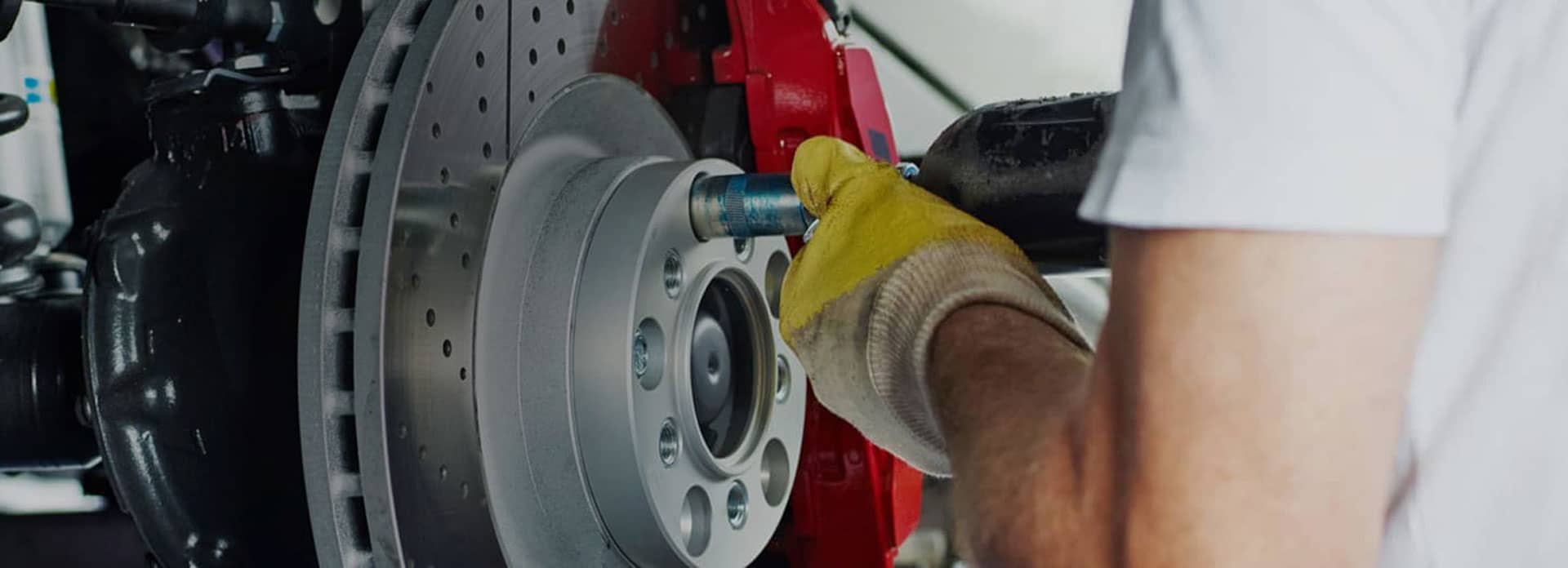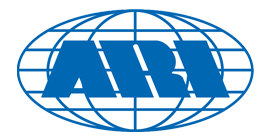
GENERAL MAINTENANCE
It's Time for the 21st Century Tune-up
Times are changing...cars are changing. One of the biggest changes in today's automotive industry is the perception of a "tune-up." Ask 10 vehicle owners their definition of a tune-up and chances are there'll be 10 different answers. The classic "tune-up" was once the heart of the automotive business and contrary to some beliefs; today's modern vehicles still need tune-ups to keep them performing at the most efficient levels.
The tune-up was historically associated with the routine replacement of key ignition system parts like spark plugs and ignition points, along with some basic adjustments to help "tune" the engine. Mounting pressure for increased fuel economy and lower emissions drove the car manufacturers to adopt electronics and to do away with ignition points in the '70s, along with the carburetor in the middle '80s. This eliminated the need for the replacement and adjustment of a growing number of ignition and fuel system parts.
As the pace of technology quickened, the procedures required to perform a traditional tune-up changed dramatically. Highly sophisticated ignition and fuel systems are now the norm, using one or more onboard computers to control critical engine and transmission management functions. Things that were once handled mechanically are now controlled electronically through the widespread use of onboard computer technology.
Because vehicles have changed so much over the years, the Car Care Council has introduced the 21st Century Tune-up. This program is designed to help re-define and educate motorists as to what a tune-up should consist of on today's modern vehicles.
"There is a misconception that today's modern vehicles don't need tune-ups because they never break down, but that simply is not true," said Rich White, executive director of the Car Care Council. "If you're at work and your computer goes down, you can't get any more work done. It's the same with your vehicle. If the vehicle isn't being properly maintained, you're not going to get where you want to go."
As part of the 21st Century Tune-up on today's modern vehicles, the following systems should be inspected:
- battery, charging and starting
- engine mechanical
- powertrain control (including onboard diagnostic checks)
- fuel
- ignition
- emissions
Vehicle owners ask for tune-ups for a variety of reasons, including improving performance, maintaining reliability, planning a vacation, preparing for winter/summer or because they're giving the car to a friend or family member.
To help ensure good performance, fuel economy and emissions, the Car Care Council also recommends that motorists take the time necessary to become familiar with their vehicle from every aspect. Study the owner's manual to become thoroughly acquainted with the operation of all systems. Pay special attention to the indicator lights and instruments.
Getting Your Vehicle Ready for Winter
Mechanical failure—an inconvenience anytime it occurs--can be deadly in the winter. Preventive maintenance is a must. Besides, a well-maintained vehicle is more enjoyable to drive, lasts longer, and could command a higher resale price.
Some of the following tips can be performed by any do-it-yourselfer; others require the skilled hands of a professional auto technician.
- Engine Performance - Get engine driveability problems (hard starts, rough idling, stalling, diminished power, etc.) corrected at a good repair shop. Cold weather makes existing problems worse. Replace dirty filters-air, fuel, etc.
- Fuel - Put a bottle of fuel de-icer in your tank once a month to help keep moisture from freezing in the fuel line. Note that a full gas tank helps keep moisture from forming.
- Oil - Change your oil and oil filter as specified in your manual—more often (every 5,000 kilometers) if your driving is mostly stop-and-go or consists of frequent short trips.
- Cooling Systems - The cooling system should be completely flushed and refilled about every 24 months. The level, condition, and concentration of the coolant should be checked periodically. (A 50/50 mix of anti-freeze and water is usually recommended.) DIYers, never remove the radiator cap until the engine has thoroughly cooled! The tightness and condition of drive belts, clamps, and hoses should be checked by a pro.
- Windshield Wipers - Replace old blades. If your climate is harsh, purchase rubber-clad (winter) blades to fight ice build-up. Stock up on windshield washer solvent-you'll be surprised how much you use. Carry an ice-scraper.
- Heater/Defroster - The heater and defroster must be in good working condition for passenger comfort and driver visibility. Newer models have a cabin air filter that should be replaced periodically. Check your owner's manual for the location and replacement interval.
- Battery - The only accurate way to detect a weak battery is with professional equipment. Routine care: Scrape away corrosion from posts and cable connections; clean all surfaces; re-tighten all connections. If battery caps are removable, check fluid level monthly. Avoid contact with corrosive deposits and battery acid. Wear eye protection and rubber gloves.
- Lights - Inspect all lights and bulbs; replace burned out bulbs; periodically clean road grime from all lenses. To prevent scratching, never use a dry rag.
- Exhaust System - Your vehicle should be placed on a lift and the exhaust system examined for leaks. The trunk and floor boards should be inspected for small holes. Exhaust fumes can be deadly.
- Tires - Worn tires will be of little use in winter weather. Examine tires for remaining tread life, uneven wearing, and cupping; check the sidewalls for cuts and nicks. Check tire pressures once a month. Check the tires when they are cold, before driving for any distance. Rotate as recommended. Don't forget your spare, and be sure the jack is in good condition.
- Carry emergency gear: gloves, boots, blankets, flares, a small shovel, sand or kitty litter, tire chains, and a flash light. Put a few "high-energy" snacks in your glove box.
Getting Your Vehicle Ready For Summer
Summer's heat, dust, and stop-and-go traffic, will take their toll on your vehicle. Add the effects of last winter, and you could be poised for a breakdown. You can lessen the odds of mechanical failure through periodic maintenance. . . Your vehicle should last longer and command a higher resale price, too!
Some of the following tips are easy to do; others require a skilled auto technician.
- Air Conditioning - A marginally operating system will fail in hot weather. Have the system examined by a qualified technician. Newer models have cabin air filters that clean the air entering the heating and air conditioning system. Check your owner's manual for location and replacement interval.
- Cooling System - The greatest cause of summer breakdowns is overheating. The cooling system should be completely flushed and refilled about every 24 months. The level, condition, and concentration of the coolant should be checked periodically. (A 50/50 mix of anti-freeze and water is usually recommended.) DIYers, Never remove the radiator cap until the engine has thoroughly cooled! The tightness and condition of drive belts, clamps, and hoses should be checked by a pro.
- Oil - Change your oil and oil filter as specified in your manual-more often (every 5,000 kilometers) if you make frequent short jaunts, extended trips with lots of luggage, or tow a trailer.
- Engine Performance - Replace other filters (air, fuel, PCV, etc.) as recommended-more often in dusty conditions. Get engine driveability problems (hard starts, rough idling, stalling, diminished power, etc.) corrected at a good shop.
- Windshield Wipers - A dirty windshield causes eye fatigue and can pose a safety hazard. Replace worn blades and get plenty of windshield washer solvent.
- Lights - Inspect all lights and bulbs; replace burned out bulbs; periodically clean dirt and insects from all lenses. To prevent scratching, never use a dry rag.
- Tires - Have your tires rotated about every 5,000 kilometers. Check tire pressures once a month; check them while they're cold before driving for any distance. Don't forget to check your spare as well and be sure the jack is in good condition. Examine tires for tread life, uneven wearing, and cupping; check the sidewalls for cuts and nicks. An alignment is warranted if there's uneven tread wear or if your vehicle pulls to one side.
- Brakes - Brakes should be inspected as recommended in your manual, or sooner if you notice pulsations, grabbing, noises, or longer stopping distance. Minor brake problems should be corrected promptly.
- Battery - Batteries can fail any time of year. The only accurate way to detect a weak battery is with professional equipment. Routine care: Scrape away corrosion from posts and cable connections; clean all surfaces; re-tighten all connections. If battery caps are removable, check the fluid level monthly. Avoid contact with corrosive deposits and battery acid. Wear eye protection and rubber gloves.
- Emergencies - Carry some basic tools-ask a technician for suggestions. Also include a first aid kit, flares, and a flashlight. Consider buying a cellular phone.
Keeping Your Vehicle in Tune with the Environment
Car care is definitely a win-win situation. Besides helping the environment, a properly maintained and operated vehicle will run more efficiently, will be safer, and will last longer-up to 50% longer, according to a survey of ASE-certified Master Auto Technicians. The following tips should put you on the road to environmentally conscious car care.
- Keep your engine tuned. A misfiring spark plug can reduce fuel efficiency as much as 30%. Follow the service schedules listed in your owner's manual. Replace filters and fluids as recommended.
- Check your tires for proper inflation. Under inflation wastes fuel-your engine has to work harder to push the vehicle. Wheels that are out-of-line (as evidenced by uneven tread wear or vehicle pulling) make the engine work harder, too. Properly maintained tires will last longer, meaning fewer scrap tires have to be disposed.
- Keep your air conditioner in top condition and have it serviced only by a technician certified competent to handle/recycle refrigerants. Air conditioners contain CFCs-gases that have been implicated in the depletion of the ozone layer. According to the Environmental Protection Agency, almost one third of the CFCs released into the atmosphere come from mobile air conditioners; some simply leaks out, but the majority escapes during service and repair-so it's important to choose a qualified technician.
- Do-it-yourselfers: dispose of used motor oil, anti-freeze/coolant, tires, and old batteries properly. Many repair facilities accept these items. Or call your local municipal or county government for recycling sites. Never dump used oil or anti-freeze on the ground or in open streams.
- Observe speed limits. Mileage decreases sharply above 55 kph.
- Drive gently. Avoid sudden accelerations and jerky stop-and-go's. Use cruise-control on open highways to keep your speed as steady as possible.
- Avoid excessive idling. Shut off the engine while waiting for friends and family. Today's vehicles are designed to "warm up" fast, so forget about those five-minute warm ups on cold winter mornings.
- Remove excess items from the vehicle. Less weight means better mileage. Store luggage/ cargo in the trunk rather than on the roof to reduce air drag.
- Plan trips. Consolidate your daily errands to eliminate unnecessary driving. Try to travel when traffic is light to avoid stop-and-go conditions. Join a car pool.
Remember, how your car runs, how you drive it, and how its fluids, old parts, and tires are disposed of all have serious consequences on the environment.
What Is a Maintenance Schedule?
A maintenance schedule is a mileage-based guide that outlines when your car needs routine services like oil changes, fluid checks, and part replacements. Having this information readily available helps you make informed decisions about your vehicle.
A Vehicle Maintenance Schedule for Every Driver
While exact recommendations vary based on your driving habits and vehicle type, most cars follow a pattern of services tied to odometer readings. Here's a general guide of when to expect different maintenance needs:
Every 5,000 miles
- Change the oil and oil filter (if using conventional oil)
- Check and top off fluids (brake, coolant, windshield washer)
- Inspect tires for wear and ensure proper tire pressure
Every 10,000 miles
- Rotate tires to promote even wear
- Replace oil and filter if using synthetic oil
- Inspect the cabin air filter and engine air filter; replace if dirty
Routine Car Maintenance: 30,000-90,000 miles
At 30,000 miles
- Replace engine air filter if not already done
- Inspect fuel system and fuel filter
- Inspect brake pads, hoses, and lines for wear
At 60,000 miles
- Replace spark plugs to keep your engine firing smoothly
- Inspect and potentially replace tires
- Check belts, hoses, and (if applicable) the timing belt - replace as needed to avoid costly damage
At 90,000 miles
- Flush and replace brake fluid
- Inspect and clean battery terminals
- Perform a full mechanical inspection for aging components
Routine Car Maintenance: 100,000 miles and beyond
At 120,000 miles
- Replace O2 sensors and coolant
- Flush the radiator and replace thermostat if needed
- Inspect shocks and struts for wear; replace if driving feels rough
At 180,000 miles
- Replace power steering fluid
- Clean the mass airflow sensor for better fuel efficiency
- Inspect all seals and gaskets, especially around the axles and driveshafts
At 250,000 miles
- Clean or replace fuel injectors to maintain performance
- Inspect the chassis for rust or damage
- Check the catalytic converter and emissions system
Why Should I Follow a Maintenance Schedule?
Following a maintenance schedule ensures that small issues are caught before they turn into expensive repairs. It keeps your car safe to drive, extends the life of major components, and gives you peace of mind on the road.
Where Do I Find My Car's Maintenance Schedule?
The best place to check is your vehicle's owner's manual, which outlines the manufacturer's recommendations for each mileage interval. If you're unsure or can't find your manual, our team at N2 Tire & Auto is happy to help.
Just give us a call at 905-940-4922, and we'll guide you on the services your car needs and when to schedule them.
Discover More About General Maintenance Tips At N2 Tire & Auto in Markham
Ask The Mechanic







